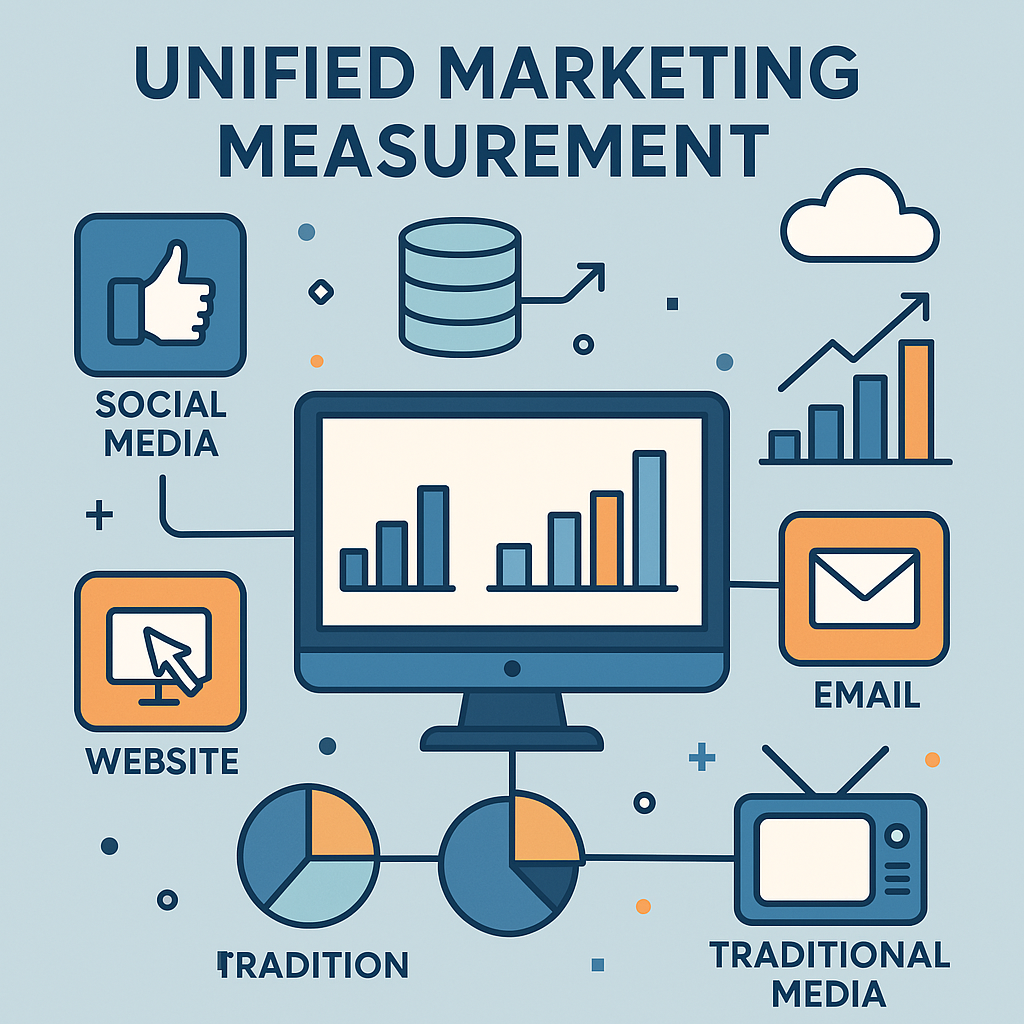In today’s fast-paced and competitive business landscape, effective marketing is more crucial than ever. One of the biggest challenges that marketers face is accurately measuring the performance of their campaigns across multiple channels. With the myriad of digital platforms available, from social media to websites, and traditional media, it can be overwhelming to understand which strategies yield the best return on investment (ROI). Enter Unified Marketing Measurement (UMM), a comprehensive approach that seeks to simplify and enhance marketing analytics.
What is Unified Marketing Measurement?
Unified Marketing Measurement is an advanced analytical framework that integrates multiple data sources to provide a holistic view of marketing performance. Rather than measuring channels in silos, UMM allows marketers to assess the impact of various marketing efforts in a unified manner. By combining data from online and offline sources, including social media, email campaigns, website traffic, and even traditional media like television and radio, UMM helps businesses understand how different channels interact and contribute to overall marketing goals.
Why is Unified Marketing Measurement Important?
1. Holistic View of Performance
One of the primary advantages of UMM is its ability to provide a comprehensive picture of marketing performance. Traditional analytics often track channels separately, leading to disjointed insights. By unifying data, marketers can see how campaigns across different channels complement each other, allowing for more informed decision-making.
2. Improved Attribution Models on Unified Marketing Measurement
Digital marketing has introduced complex attribution questions. Where traditional models may give all credit to the last click, UMM employs sophisticated attribution techniques that recognize the contribution of each touchpoint in the customer journey. This results in a more accurate understanding of which tactics are truly driving conversions and enables marketers to allocate budgets more effectively.
3. Better Resource Allocation
With a clearer view of marketing performance, organizations can allocate their resources more efficiently. By identifying high-performing channels, businesses can focus their investment in strategies that deliver the best results, while also optimizing or re-evaluating underperforming tactics. This can lead to increased ROI and more effective use of marketing budgets.
4. Adaptability and Responsiveness
UMM enables marketers to respond quickly to changing market conditions or customer behaviors. A unified view allows for real-time performance tracking, making it easier to pivot strategies as necessary. For instance, if a particular campaign is underperforming, marketers can quickly analyze data and reallocate resources or adjust messaging before significant budget is wasted.
5. Enhanced Collaboration
With a unified approach, different teams within an organization (like sales, marketing, and product development) can collaborate more effectively. By having access to the same insights and analytics, teams can align their goals and tactics, leading to a more cohesive and efficient marketing strategy.
Implementing Unified Marketing Measurement
Step 1: Data Integration
The first step in implementing UMM is integrating data from various sources. This requires not just technical tools and software but also a strategic approach to gather and organize data from online and offline channels. Using customer relationship management (CRM) systems, web analytics, and marketing automation platforms can streamline this process.
Step 2: Choose the Right Metrics for Unified Marketing Measurement
Not all metrics are created equal. It’s important to identify which metrics align with your business goals. Focus on key performance indicators (KPIs) that offer insights into customer behavior, conversion rates, and overall business impact, rather than vanity metrics that do not contribute to meaningful insights.
Step 3: Utilize Advanced Analytics Tools
To make sense of the data, advanced analytics tools and techniques such as data visualization, predictive analytics, and machine learning can be invaluable. These tools can help uncover patterns and trends that traditional approaches may miss.
Step 4: Continuous Testing and Optimization
The marketing landscape is ever-evolving, and what works today may not work tomorrow. UMM encourages a culture of continuous testing and optimization. By experimenting with different strategies and analyzing their impacts, organizations can stay ahead of the curve.
Conclusion
As marketing becomes increasingly complex, Unified Marketing Measurement offers a beacon of clarity. By integrating data from various channels and employing advanced analytics, organizations can gain accurate insights into their marketing performance. In an age where every dollar counts, UMM not only enhances ROI but also fosters better decision-making and collaboration across teams. As businesses continue to navigate this multifaceted landscape, embracing UMM may very well become a cornerstone of successful marketing strategy.
By taking the time to implement UMM effectively, companies can position themselves for greater agility, efficiency, and success in their marketing endeavors.

